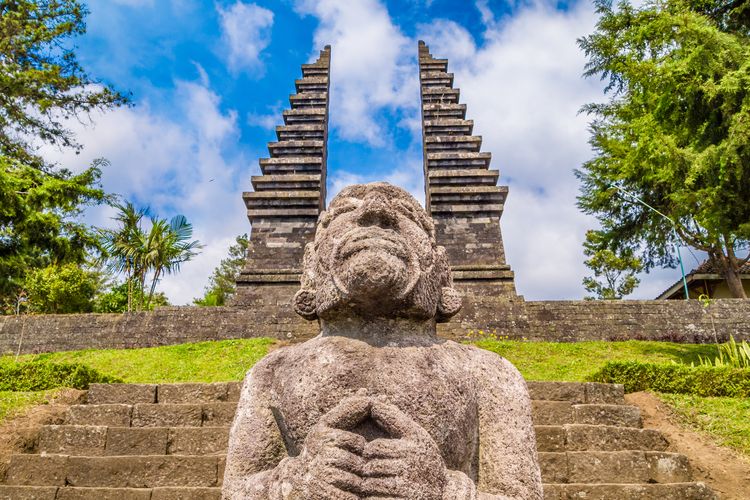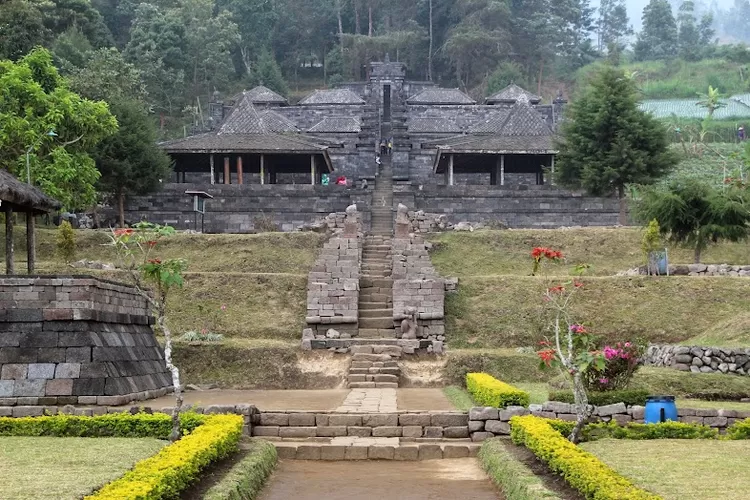JJS Jateng Gayeng, Karanganyar - Cetho Temple is a Hindu temple located on Mount Lawu, with an altitude of about 1,496 meters above sea level. This location makes it one of the highest temples in Indonesia. This temple in Karanganyar is a relic of the Majapahit Kingdom at the end of Prabu Brawijaya V's reign. Of course, there is a long history and philosophy of each terrace in this temple. Curious? Check out the review below.
The Cetho Temple site was first discovered by Van der Vlis in 1842. The results of his research were continued by WF Stuterheim, KC Crucq, and AJ Bernet Kempers. It was only in 1928 that the Dutch East Indies Antiquities Service (Commissie vor Oudheiddienst) conducted research, excavation and reconstruction. This Hindu temple is estimated to have been built in 1475 AD (around 1397 Saka). This is known based on the inscription written in ancient Javanese letters on the gate wall.
The inscription reads: “Pelling padamel irikang buku tirtasunya hawakira ya hilang saka kalanya wiku goh anaut iku 1397.”
If interpreted, the inscription commemorates the establishment of a place of ritual or a place to free oneself from curses in 1397 Saka. The description also provides an explanation of the function of this temple. The age of this temple is not much different from Sukuh Temple, which is quite close in location.
Besides Sukuh Temple, there is also Kethek Temple or monkey temple, which is located about 500 meters from Cetho Temple. The construction of this temple is a kind of stepped punden consisting of five levels. When first discovered, the temple had 14 terraces, but currently only nine remain.
The nine terraces that can be found today are the result of restoration carried out by Sudjono Humardani in the 1970s. This restoration has drawn a lot of criticism from experts, because it was considered not carried out in accordance with standard methods in archaeology.
The process also changed many of the original structures, so that the current form is very similar to temple buildings in Bali. Philosophically, the meaning of the name Cetho is “real” or “clear,” clear from both human and supernatural views. In addition to being a hiking trail, this place is still used for worship by the Hindu community and also the Kejawen believers around Karanganyar. Cetho Temple Karanganyar is also a favorite place for spiritualists. Before visiting this temple, there are several levels of terraces that must be known.
On the first terrace, there is a large gate which was added during the restoration, around which there are two guardian statues. Going up to the second terrace, you can find the petilasan of Ki Ageng Kricingwesi, who is believed to be the ancestor of the Ceto Hamlet community. On the third terrace, there are horizontal stones arranged to form a giant turtle.
This turtle is thought to be a symbol of Majapahit called “Surya Majapahit.”
In addition, there is also a 2-meter-long phallus (male genitalia) symbol on this terrace. The turtle symbolizes the creation of the universe, while the phallus symbolizes the creation of man. There are also many depictions of animals or also called sengkalan memet, which is a record of the beginning of the construction of this temple.
Going up to the fourth terrace, there is a relief that contains excerpts of the story of Samudramanthana and Garudeya. The footage further strengthens the assumption of the function of this temple, which is as a place of purification or cleansing from curses.
On the fifth and sixth terraces, there is a building in the form of a pendapa that is often used as a place for religious ceremonies. On the seventh terrace, there are two statues on the north and south sides. The statues are of Sabdapalon and Nayagenggong. According to belief, Sabdapalon and Nayagenggong were spiritual advisors to Prabu Brawijaya V.
On the eighth terrace, there is a phallus statue called “kuntobimo” and a statue of Prabu Brawijaya V in the form of a god. Meanwhile, the last or ninth terrace is a place for prayers. This ninth terrace is not open at all times, only used on special occasions such as prayers.



Comments